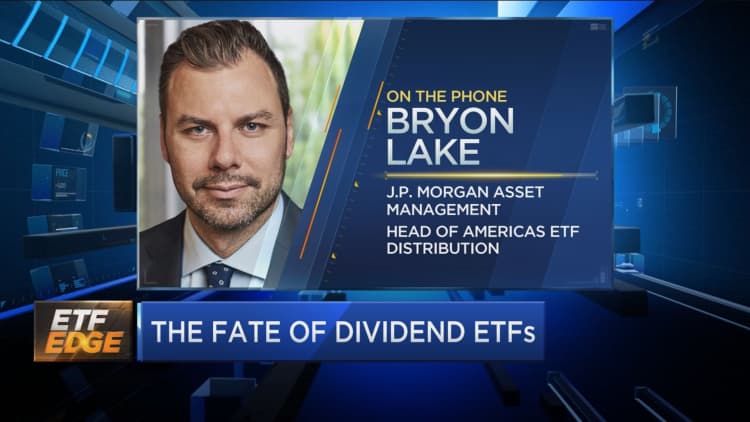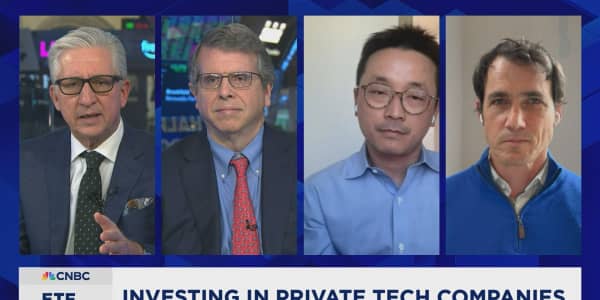
What's the deal with dividend ETFs?
As companies slash shareholder payouts in an effort to stem the financial damage wrought by the coronavirus pandemic, some investors are wondering how that could affect dividend-based exchange-traded funds.
With some 20 companies in the S&P 500 recently announcing plans to cut or suspend dividend payments, the news flow itself has taken a toll on dividend ETFs, which typically base their investments on companies that maintain a high dividend relative to their peers or steadily increase their dividend over time.
Those funds include:
- the Vanguard High Dividend Yield Index Fund ETF (VYM), down over 19% year to date
- the ProShares S&P 500 Dividend Aristocrats ETF (NOBL), down nearly 19% this year
- the iShares Core High Dividend ETF (HDV), down more than 20% year to date
- the SPDR S&P Dividend ETF (SDY), down almost 22% this year
But there might be more to the declines than just that, Bryon Lake, head of Americas ETF distribution at J.P. Morgan Asset Management, told CNBC's "ETF Edge" on Monday.
"First of all, the leadership in this market has been primarily driven by mega-tech, which don't typically pay dividends, and so some of the dividend-paying companies have lagged because of that," Lake said.
Beyond that, "we're actually seeing investors looking to rotate more towards quality," he said. "They're very interested in companies that have strong balance sheets to manage their ongoing business expenses [and] pay down debt."
Not all companies that fit that description pay dividends, "so, I do think there will be some differentiation" when it comes to how investors choose what to buy in the near term, Lake said.
"It's mostly down to the leadership in this market right now," he said.
Mike Akins, founding partner of independent research platform ETF Action, urged investors to remember just how many ETFs leverage dividend payers as part of their strategies.
"There's 177 ETFs just listed in the U.S. that have 'dividend' in their name, with over $200 billion following those products," he said in the same "ETF Edge" interview. "At the end of the day, dividends can be used in a number of different ways to create very different portfolios."
Even the rotation to quality can benefit some dividend ETFs, Akins said, noting that "dividend ETFs that have quality characteristics" such as the iShares Core Dividend Growth ETF (DGRO) and the Vanguard Dividend Appreciation Index Fund ETF (VIG) have outpaced their peers in recent weeks. VIG has also outperformed the S&P this year, with a 10% loss versus the S&P's nearly 13% decline.
"So, it's important to keep the context of dividend and the methodology around how the dividend's being used," Akins said.
"The other thing I always tell people with respect to any sort of screening methodology and any sort of ETF is to understand your sector exposures, and depending on how you're screening using dividends, it can lead to massive overweights," he said.
Akins flagged HDV as an example. At first glance, investors might not realize that the iShares product has 25% of its portfolio in energy because of the industry's tendency to produce high yields.
"So, ... it's just important to note that the word 'dividend' doesn't necessarily have anything to do with yield. It's the way that they're using that dividend to get to the end portfolio," Akins said.





